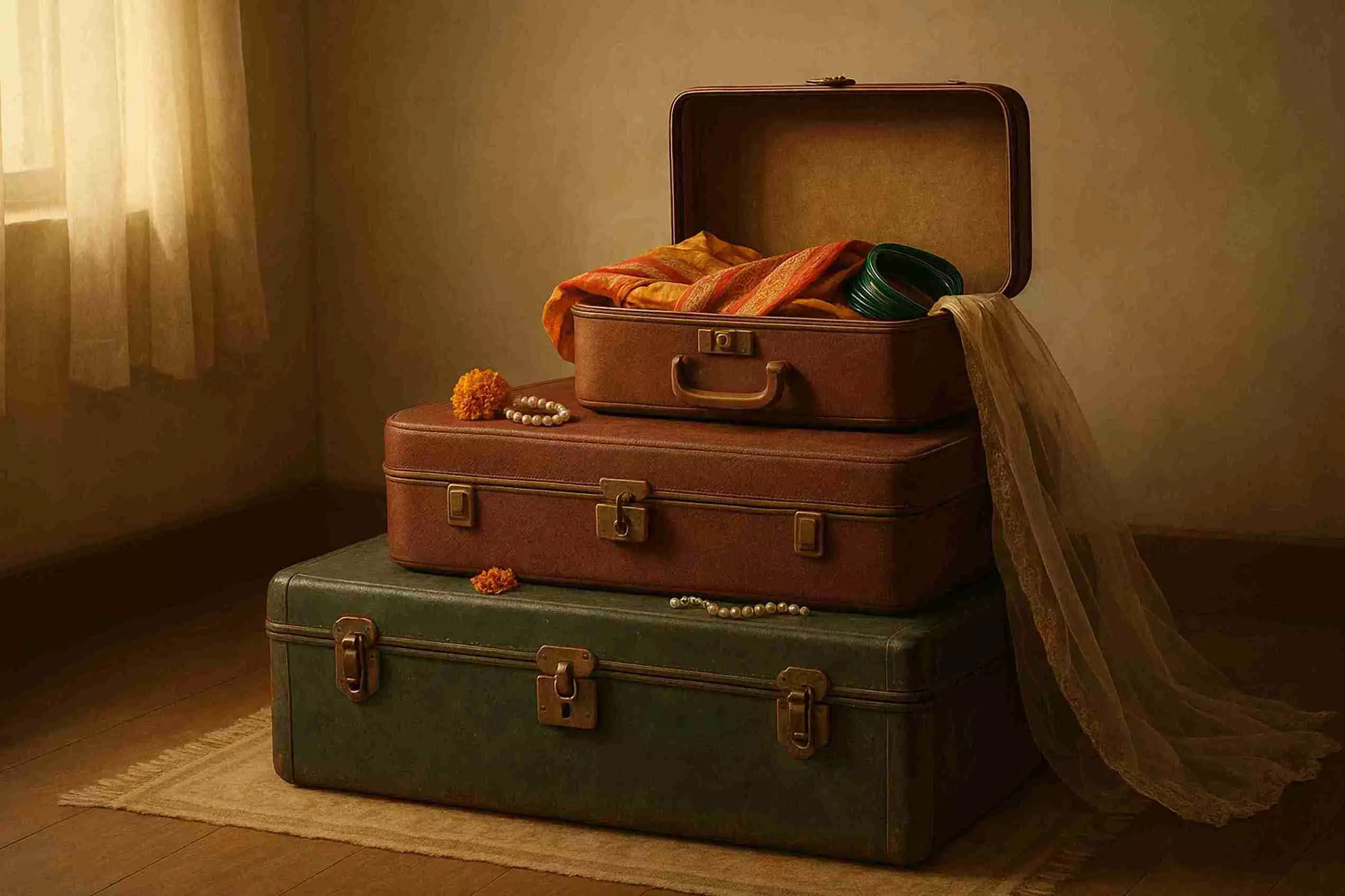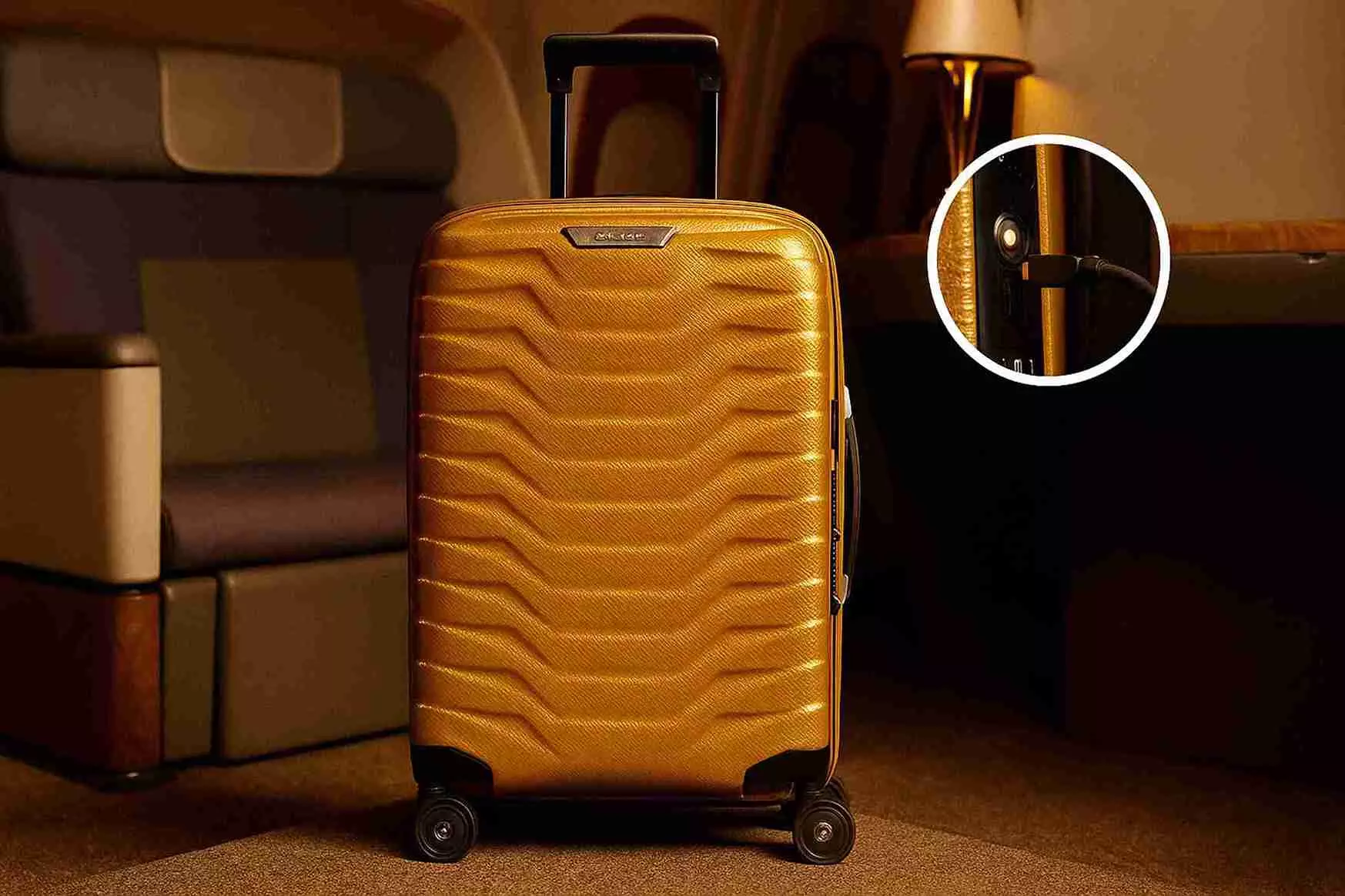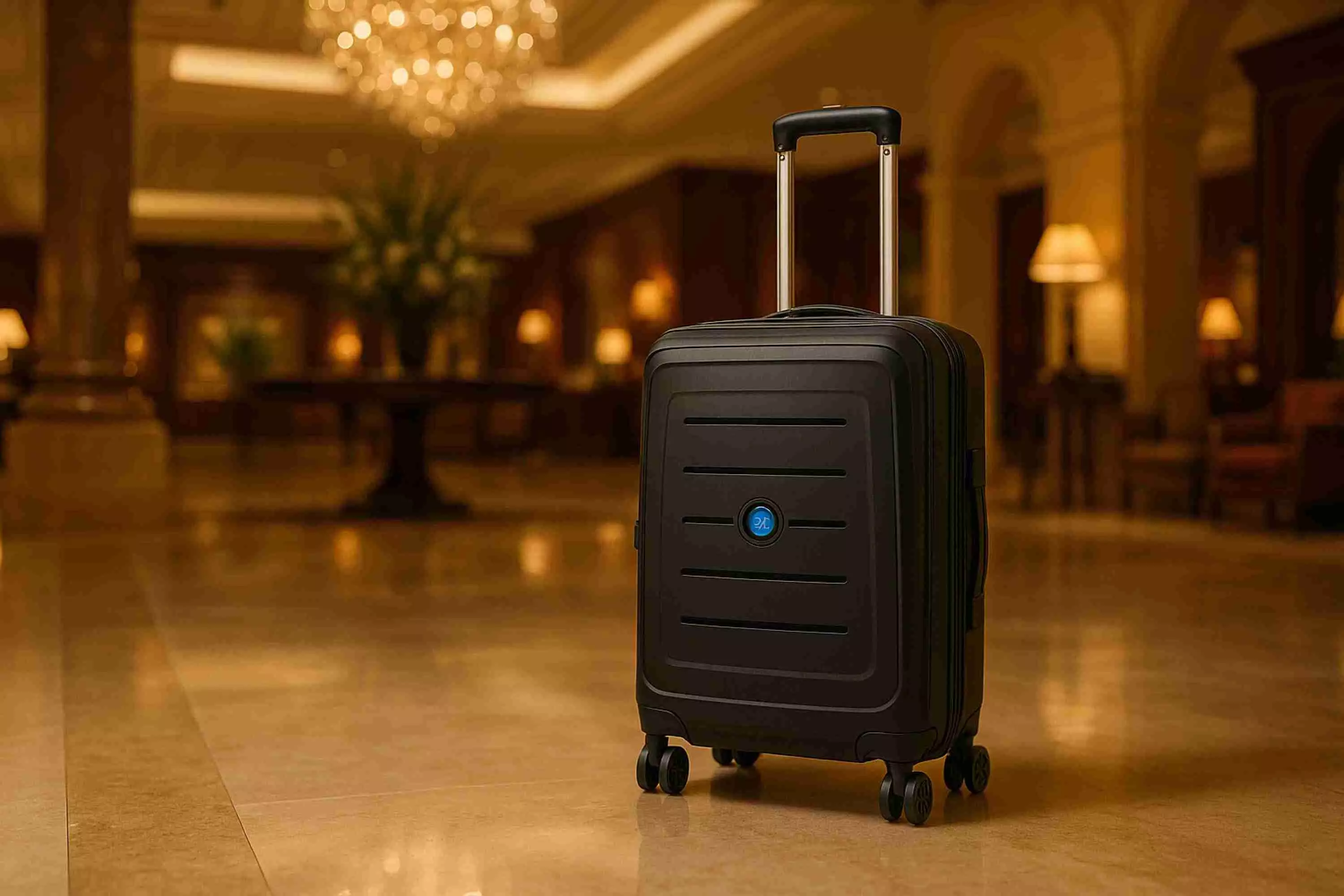
- Home
- India
- World
- Premium
- THE FEDERAL SPECIAL
- Analysis
- States
- Perspective
- Videos
- Sports
- Education
- Entertainment
- Elections
- Features
- Health
- Business
- Series
- In memoriam: Sheikh Mujibur Rahman
- Bishnoi's Men
- NEET TANGLE
- Economy Series
- Earth Day
- Kashmir’s Frozen Turbulence
- India@75
- The legend of Ramjanmabhoomi
- Liberalisation@30
- How to tame a dragon
- Celebrating biodiversity
- Farm Matters
- 50 days of solitude
- Bringing Migrants Home
- Budget 2020
- Jharkhand Votes
- The Federal Investigates
- The Federal Impact
- Vanishing Sand
- Gandhi @ 150
- Andhra Today
- Field report
- Operation Gulmarg
- Pandemic @1 Mn in India
- The Federal Year-End
- The Zero Year
- Science
- Brand studio
- Newsletter
- Elections 2024
- Events
How women’s travel bags have evolved over time

The journey of women's luggage in India tells a fascinating story of liberation, innovation, and cultural transformation. From the heavy steel almirahs that once carried dowries across state lines to today's GPS-enabled smart suitcases that accompany solo female travellers on international adventures, the evolution of women's travel bags mirrors the changing status of Indian women themselves....
The journey of women's luggage in India tells a fascinating story of liberation, innovation, and cultural transformation. From the heavy steel almirahs that once carried dowries across state lines to today's GPS-enabled smart suitcases that accompany solo female travellers on international adventures, the evolution of women's travel bags mirrors the changing status of Indian women themselves. In the 1950s and 60s, when arranged marriages were the norm and women's mobility was largely restricted to their transition from paternal to marital homes, luggage served a very different purpose. The iconic steel almirah, often weighing upwards of 50 kilograms when packed, was the primary vessel for a woman's worldly possessions. These weren't just storage units; they were symbols of family honour, carrying everything from silk sarees to brass utensils that would define her new life.
“My grandmother's steel trunk from 1962 is still in our family,” shares Priya Sharma, a 34-year-old corporate lawyer from Delhi. “It's massive, ornate, and completely impractical for today's travel, but it represents an era when women's journeys were predetermined, not chosen.” Debosmita Kapse, a marcom professional from Mumbai, shares, “I have an old steel trunk that once belonged to my grandmother—and before her, to her mother. It holds deep emotional value. I use it to store sarees and a few of her hand-stitched clothes, which are incredibly precious to me. I move cities almost every two years, and that trunk always comes with me. It’s not just luggage—it’s a piece of home I carry wherever I go.”
Travel writer and digital nomad, Soumya Gayatri reminisces, “I was just a student when I first travelled with a trunk—a good old aluminium one that had been in the family for years. Just something my mother brought with her during her wedding. She had packed it so meticulously when I left for my engineering at NIT Rourkela in 2002, it felt like a piece of home.” She continues, “That trunk became my comfort space — everything I ever needed was in it. It stayed with me through four years of engineering, then moved with me again when I went to my MBA hostel. Sometimes, I even used it as a settee, decorating it like part of my room.”

The unwieldy steel trunks gave way to more manageable suitcases, though still predominantly chosen by male family members.
The transformation began in the 1970s and 80s as urbanization accelerated and women started entering the workforce. The unwieldy steel trunks gave way to more manageable suitcases, though still predominantly chosen by male family members. It wasn't until the 1990s that women began asserting their preferences in luggage selection, coinciding with India's economic liberalisation and the gradual shift in societal attitudes toward women's independence.
The rise of Indian luggage giants
The story of modern Indian luggage is inextricably linked with three homegrown brands that revolutionised the market: VIP, Safari, and Aristocrat. These companies didn't just manufacture bags; they created an entire ecosystem that catered to the evolving needs of Indian travellers, particularly women. VIP Industries, founded in 1971, currently commands a 43.8% market share in 9M FY23, making it the undisputed leader in Indian luggage. The company's journey reflects the broader narrative of women's changing travel patterns. In the early decades, VIP's marketing focused on durability and family travel, but by the 2000s, they had introduced lighter, more colourful options specifically targeting working women.
Safari Industries, with ~24.1% market share, has been particularly aggressive in adapting to digital-first consumers. With 20-25% of its FY23 revenues coming from online sales, compared to VIP's 16%, Safari has demonstrated a superior ability to adapt to changing consumer preferences, particularly among younger women who research and purchase their luggage independently. The transformation of the Indian luggage market is evident in the shift from unbranded to branded products. The sector, which in the past was dominated by non-branded luggage has shifted markedly to branded luggage (45% in FY20, 56% now). This change reflects not just quality consciousness but also the growing importance of luggage as a style statement, particularly among female consumers.
The Make-in-India revolution
The 'Make-in-India' initiative has profoundly impacted the luggage industry, with Indian brands expanding their manufacturing capabilities and competing globally. VIP Industries has set up 3 manufacturing facilities to deal with the rising cost in China, ensuring that Indian-made luggage meets international standards while remaining affordable for domestic consumers. This manufacturing revolution has been particularly beneficial for women's luggage, as local companies understand the specific needs of Indian female travellers better than their international counterparts.
Features like internal organization systems for traditional Indian clothing, compact designs suitable for Indian apartment living, and vibrant colours that appeal to Indian sensibilities have become standard offerings. Traditional craft techniques have also found their way into modern luggage design. Leather work from Kanpur, known for its durability and craftsmanship, has been incorporated into premium travel bags. Handloom techniques from various regions have inspired fabric patterns and textures used in soft-sided luggage, creating a unique fusion of tradition and modernity that appeals to the contemporary Indian woman.
The digital-first female traveller
The current generation of Indian women travellers represents a dramatic departure from their predecessors. They're well-informed, financially independent, and have specific requirements for their travel gear. This demographic shift has driven innovation in luggage design, with brands focusing on functionality, aesthetics, and technology integration.
“I travel solo at least six times a year for work,” explains Meera Patel, a 28-year-old digital marketing executive from Mumbai. “My luggage needs to be light enough for me to handle alone, organised enough to keep my electronics safe, and stylish enough to reflect my personality. The heavy suitcases my mother used simply don't work for my lifestyle.” Travel writer, tech PR, and creative media specialist Chandreyi Bandhopadhyay shares her shift to smart travel gear: “I’ve only recently started using what you could call sort of ‘smart luggage’—mine has a built-in charging cable, which is handy since I don’t carry a power bank. It’s from a local brand called Winsor, not one of the big names like Samsonite, which actually has some impressive smart collections. But this one works for me, especially on long flights. It’s cabin-size too, so I can keep it with me on board.”
The rise of handbag-style carry-ons has been particularly significant in this context. These hybrid designs, which blur the line between handbags and luggage, cater to the increasing number of women taking short business trips or weekend getaways. They offer the organizational benefits of a handbag with the capacity and wheels of a suitcase, making them ideal for the modern woman's travel needs.
The integration of technology into luggage has been a game-changer for Indian travellers, particularly women who often travel alone and prioritize security. Key industry players like Samsonite and Away are responding to this trend by incorporating features such as GPS tracking, biometric locks, and USB charging capabilities into their products. The smart luggage market is experiencing explosive growth, with the global smart luggage market size estimated at USD 2.24 billion in 2024 and projected to reach USD 4.14 billion by 2030, growing at a CAGR of 11.3%. Indian brands are not far behind in adopting these technologies, with companies like VIP Industries investing in smart features that cater specifically to Indian travellers' needs.

Key industry players like Samsonite and Away are responding to this trend by incorporating features such as GPS tracking, biometric locks, and USB charging capabilities into their products.
GPS-enabled tracking has become particularly popular among Indian women travellers, offering peace of mind in a country where lost luggage can be a significant concern. Anti-theft features, including TSA-approved locks and hidden zippers, address security concerns that are particularly relevant for solo female travellers. USB charging ports integrated into luggage have revolutionized travel for tech-savvy Indian women. “Having a power bank built into my suitcase has been a lifesaver during long layovers,” shares Anita Krishnan, a 31-year-old consultant who travels frequently between Indian cities. “It's these small innovations that make a huge difference in my travel experience.”
The generational divide: Millennials vs. Gen Z
The luggage preferences of millennials and Gen Z Indian women differ significantly from those of previous generations, reflecting broader changes in travel patterns, technology adoption, and lifestyle priorities. Millennials, born between 1981 and 1996, tend to prefer versatile, well-organized luggage that can handle both business and leisure travel. They value brands with established reputations and are willing to invest in quality pieces that will last for years. This generation has been the primary driver of the premiumization trend in Indian luggage, with many opting for international brands or high-end domestic options.
Gen Z travellers, born after 1997, have entirely different priorities. They're more likely to choose Instagram-worthy luggage with unique designs and colours. Sustainability is also a major concern for this generation, with many opting for brands that use recycled materials or offer repair services. They're also more likely to embrace smart luggage features, viewing technology integration as a necessity rather than a luxury. “I choose my suitcase primarily based on how it looks in photos,” admits Shivangi Nigam from Pune. “I know it sounds shallow, but I document my travels extensively on social media, and I want my luggage to be part of that aesthetic. But it also has to be functional–I need it to fit in overhead compartments and have enough space for all my electronics.”
Market dynamics and future projections
The Indian luggage market is experiencing unprecedented growth, driven by several factors including increased domestic and international travel, rising disposable incomes, and changing lifestyle preferences. India's luggage and bags market is projected to grow at a CAGR of 14.4% from 2024 to 2030, indicating robust demand across all segments. The Indian Luggage and Suitcases Market, valued at USD 3.68B in 2024, is projected to reach USD 5.5B by 2030, representing significant opportunities for both established players and new entrants. This growth is being driven by several factors, including the expansion of India's middle class, increased business travel, and the growing trend of solo travel among women. The competitive landscape is evolving rapidly, with traditional players like VIP and Safari facing increasing competition from international brands and direct-to-consumer (D2C) startups. Safari's earnings per share demonstrated overall growth, rising from ₹13.72 in March 2020 to ₹36.9 in March 2024, representing a 169% increase over the five-year period, showing how established brands are adapting to changing market conditions.

Despite the growth potential, Indian luggage brands face several challenges in competing with global giants. International brands often have superior technology, better distribution networks, and stronger brand recognition among affluent consumers. However, Indian brands have several advantages, including better understanding of local preferences, competitive pricing, and extensive domestic distribution networks. The rise of e-commerce has levelled the playing field to some extent, allowing Indian brands to reach consumers directly and compete on features rather than just distribution muscle. Safari's early adoption of e-commerce has created a significant moat in the luggage industry, demonstrating how digital transformation can be a competitive advantage.
Sustainability is emerging as a key differentiator, with consumers increasingly concerned about the environmental impact of their purchases. Indian brands have an opportunity to leverage traditional craftsmanship and sustainable materials to create products that appeal to environmentally conscious consumers. The evolution of women's travel bags in India is far from complete. As Indian women continue to break barriers and explore new horizons, their luggage needs will continue to evolve. The integration of artificial intelligence, Internet of Things (IoT) technology, and sustainable materials will likely define the next phase of innovation in the industry.
The story of women's luggage in India is ultimately a story of empowerment and transformation. As we look to the future, one thing is certain: the bags Indian women carry will continue to reflect their aspirations, their achievements, and their unwavering determination to explore the world on their own terms. In this rapidly evolving landscape, the luggage industry serves not just as a mirror to social change but as an enabler of it, providing Indian women with the tools they need to pursue their dreams, wherever they may lead.
